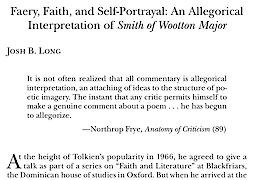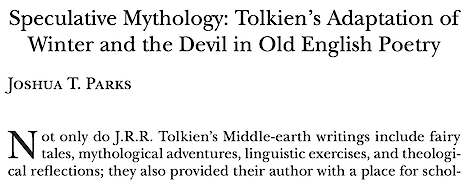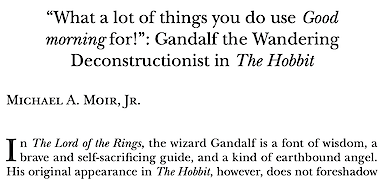
“The Lay of Aotrou and Itroun”: Sexuality, imagery, and desire in Tolkien’s works
Yvette Kisor, p. 19
The book publication of The Lay of Aotrou and Itroun in 2016 brought to wide attention a text first published in 1945 and likely completed in 1930 (Aotrou xi). “The Lay of Aotrou and Itroun,” based on Breton models,1 relates the story of a childless Lord (Aotrou) and Lady (Itroun),2 and the Lord’s choice to seek out the help of a corrigan who then attempts to coerce him into sexual intercourse as payment once twins are born; when he refuses, he dies, followed shortly in death by his Lady. Neither sees their son and daughter grow up. Belonging to an earlier period than Tolkien’s better-known works The Hobbit and The Lord of the Rings and associated with his early experiments in turning medieval poetry of many genres into modern English verse of various forms,3 it belongs as well to his early work with the Silmarillion materials and is especially associated with “The Lay of Leithian.” In fact, as Christopher Tolkien points out, it can be conclusively shown that The Lay of Aotrou and Itroun “interrupted the composition of Canto X of The Lay of Leithian” through comparison of written dates in both manuscripts (Aotrou xi). It is published along with two “Corrigan” poems, renderings into English of Breton lays, and speaks to an early interest of Tolkien’s in Celtic literature, specifically the lays of Brittany, not generally acknowledged.4 This interest of Tolkien’s could seem merely an early diversion, not nearly as important as his lifelong study of Beowulf, for example, and his deep engagement with Old English and Old Norse literature. Certainly his professional engagement with Beowulf and Old English more broadly is of prime importance, as has been acknowledged. However, “The Lay of Aotrou and Itroun” is not simply an early interest quickly discarded or merely a formal exercise in the craft of verse. It reaches out in various directions, both towards other writings from the 1920s and 1930s and even to his later, best-known work, The Lord of the Rings.…




















